Idea by
Aleš Gabrijelčič
ARHITEKTURA D.O.O.
http://www.arhitektura-doo.si/
Call for ideas 2017
City of opportunities
City of opportunities

The Thesis focuses on issues related to the current and future identity of the BTC City, one of largest shopping complexes in Europe, which is located in Ljubljana. as well as questions pertaining to its functional, conceptual, and perceptional role in the wider spatial picture of the Municipality of Ljubljana.
As Victor Gruen had discussed in his statment "From urban shop to new city" it may be deduced that the BTC City area represents an opportunity to transform Ljubljana into a contemporary regional city. The regional city will allow a development and placement of new pluralistic city-shaping activities in a much wider area of Ljubljana and will thus form the city’s new cosmopolitan identity.
The concept design of the renovation of the BTC City area includes regulation of the area of the former public warehouses, which are still preserved in their original form and are therefore the holder of historic memory in a space, predominantly permeated with new generic onstruction.
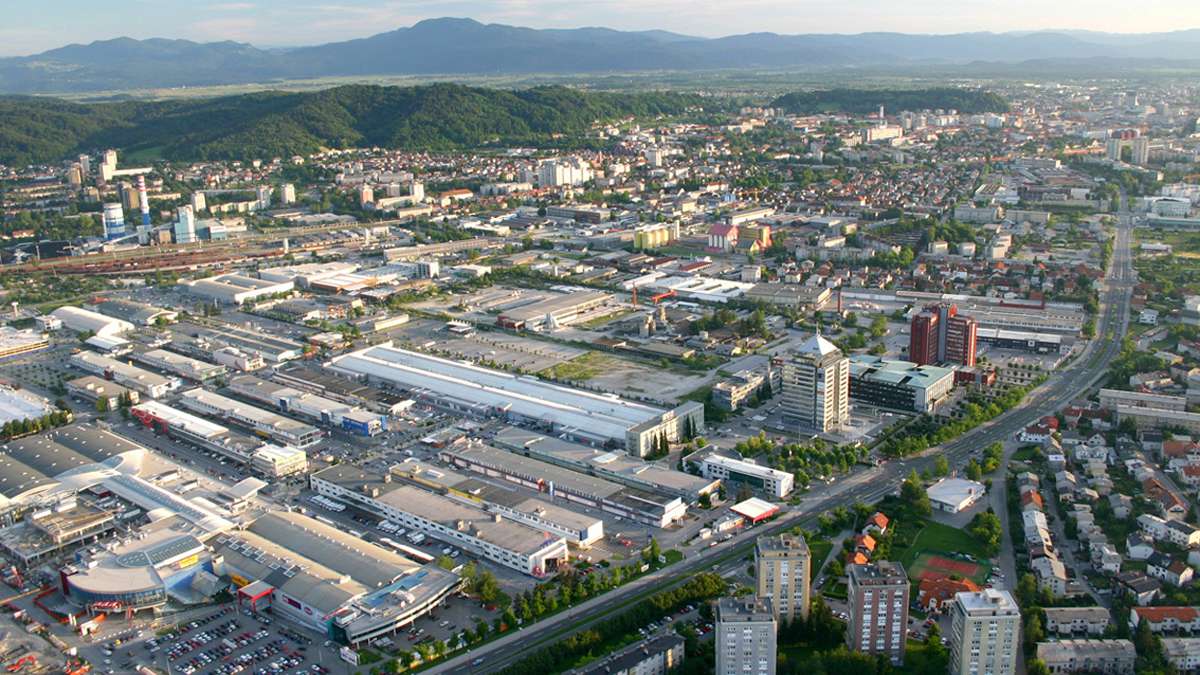
In 1954, a company named Central Warehouses was founded. The company expanded their operations by starting to carry out the warehousing activities also for other Yugoslav companies. By the year 1975, it became the largest goods and transport centre in former Yugoslavia nad one of the largest of it's kind in Europe. 1990 presents a turning point for the company. It rebranded it self as BTC (Entertainment and Shopping Center) with an aim to create the larges shopping area in Slovenia.
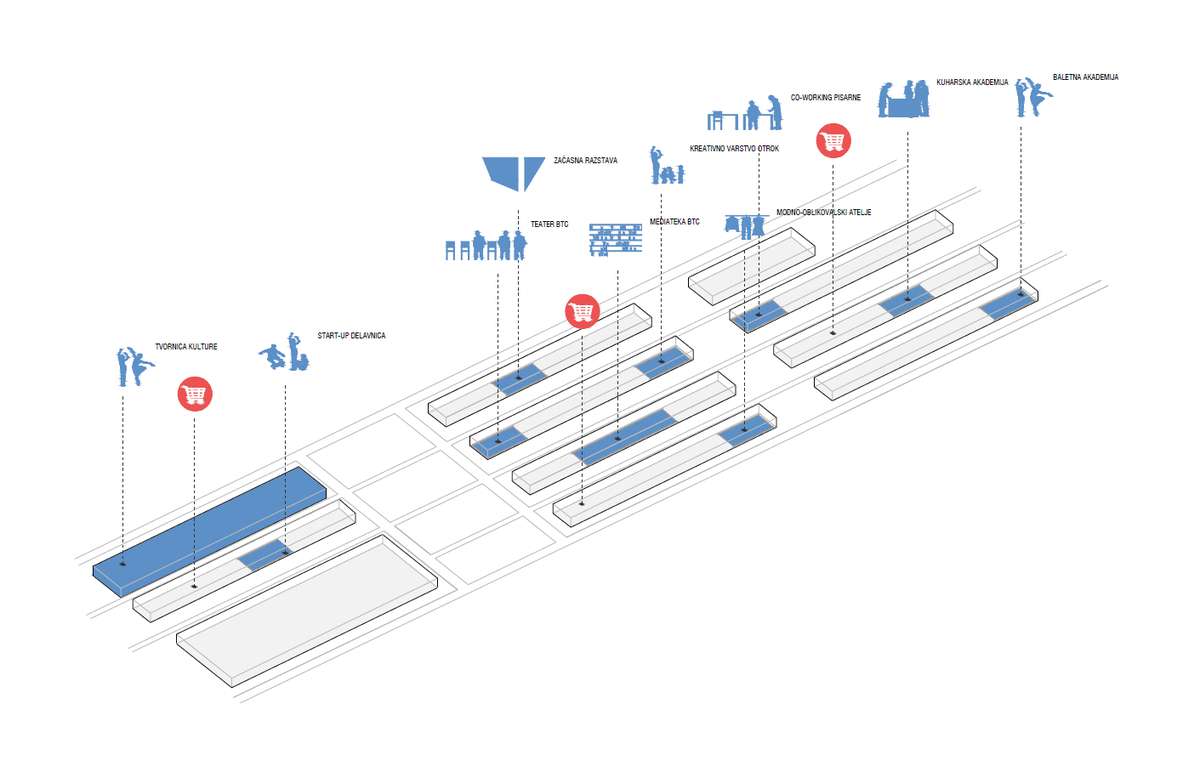
The gaps formed by the failed businesses and shopping areas in a fabric of the old warehouses turned stores, may be filled with a different, creative and also non-profitable contents. In this manner the area will acquire a new audience, one that it desperately needs for a sustainable survival in the future. Such intervention of an unlikely content for a shopping and entertaimnet area will irreversabliy bind the area with Ljubljana's city center, from which it is now so alienated.
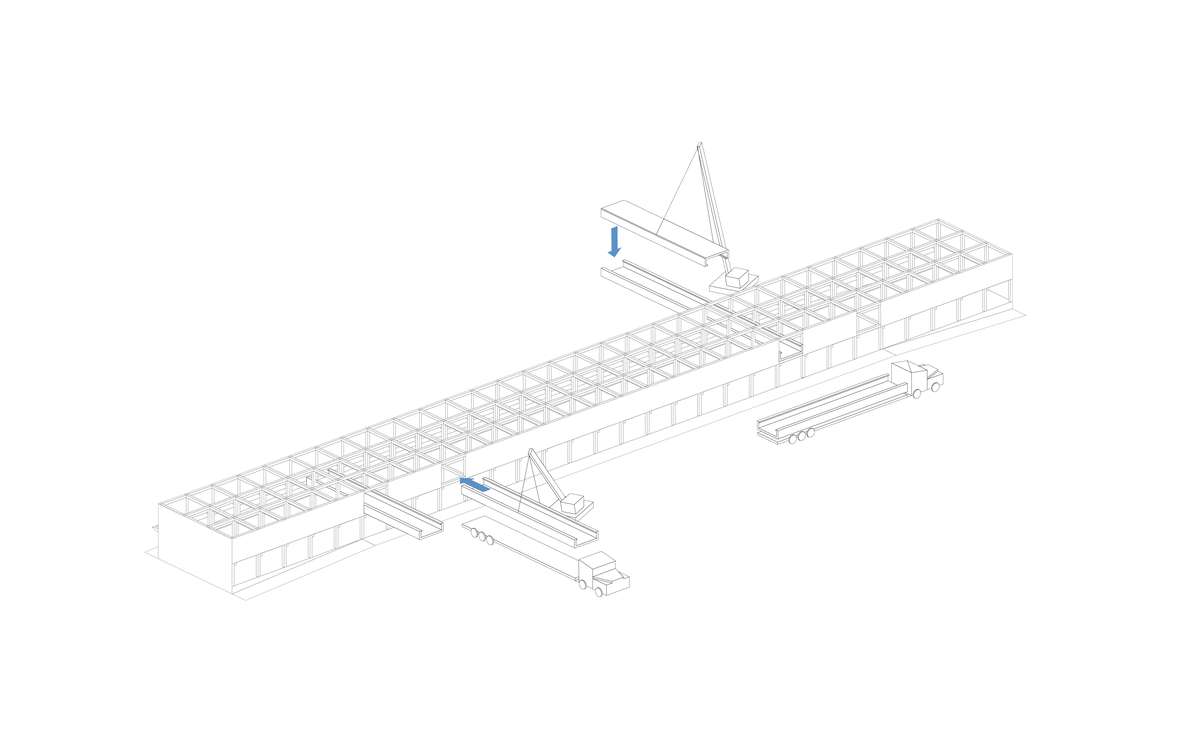
However, in order to secure a successful implementation of new substances, the ideas must be followed by a comprehensive architectural refubrishment. Due to the urban blight that sporadical shops brought to the former uniform look of the warehouses, the area as a whole is in dire need of a wider catalogue of urban and architectural elements, which will be applied in the the renovation of facades, interiors, streets and in cases when connecting warehouses together.
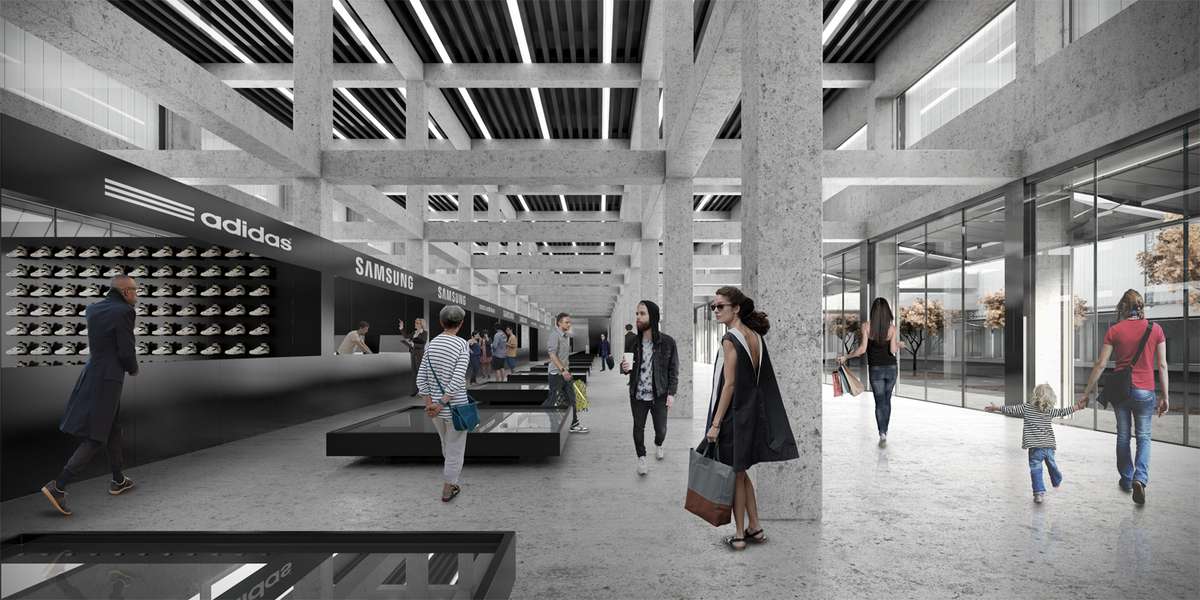
The BTC City area represents an opportunity to transform Ljubljana into a contemporary regional city which will, through a new spatial and program axis, connect the existing city center with new development areas along the Šmartinska road. The regional city will allow a development and placement of new pluralistic city-shaping activities in a much wider area of Ljubljana and will thus form the city’s new cosmopolitan identity.
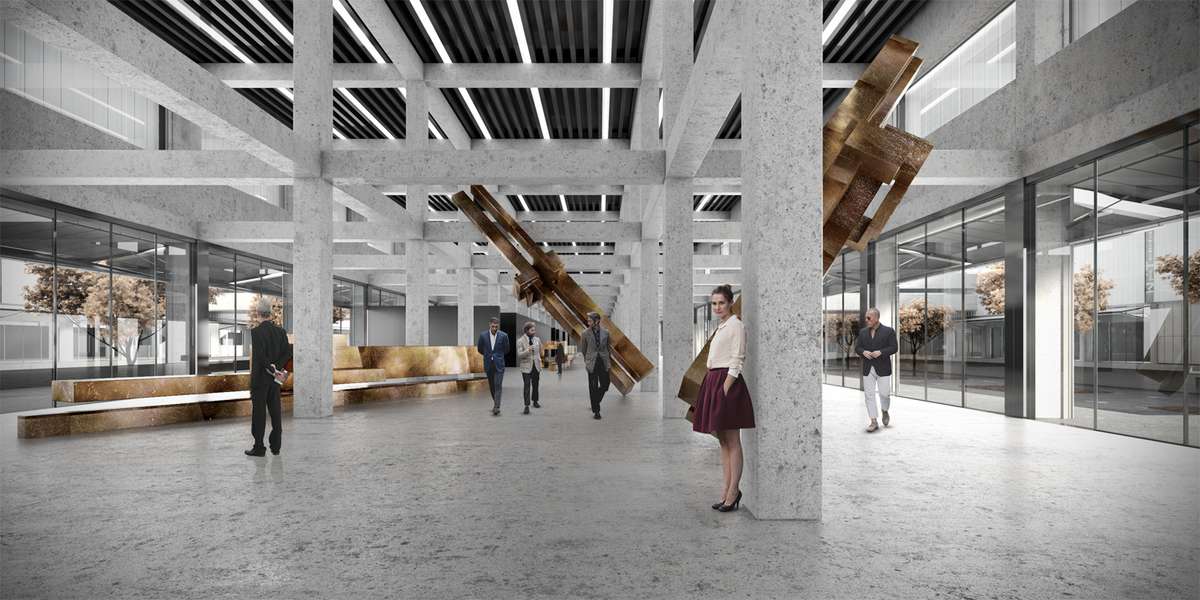
Architectural renovation of the BTC City area includes regulation of the area of the former public warehouses, which are still preserved in their original form and are therefore the holder of historic memory in a space, predominantly permeated with new generic onstruction. The con¬cept design comprises a wider urban regulation, regulation of the ground floor and the street furniture of repair roads, as well as architectural and content redesign of the former public warehouses.
City of opportunities
City of opportunities

The Thesis focuses on issues related to the current and future identity of the BTC City, one of largest shopping complexes in Europe, which is located in Ljubljana. as well as questions pertaining to its functional, conceptual, and perceptional role in the wider spatial picture of the Municipality of Ljubljana.
As Victor Gruen had discussed in his statment "From urban shop to new city" it may be deduced that the BTC City area represents an opportunity to transform Ljubljana into a contemporary regional city. The regional city will allow a development and placement of new pluralistic city-shaping activities in a much wider area of Ljubljana and will thus form the city’s new cosmopolitan identity.
The concept design of the renovation of the BTC City area includes regulation of the area of the former public warehouses, which are still preserved in their original form and are therefore the holder of historic memory in a space, predominantly permeated with new generic onstruction.
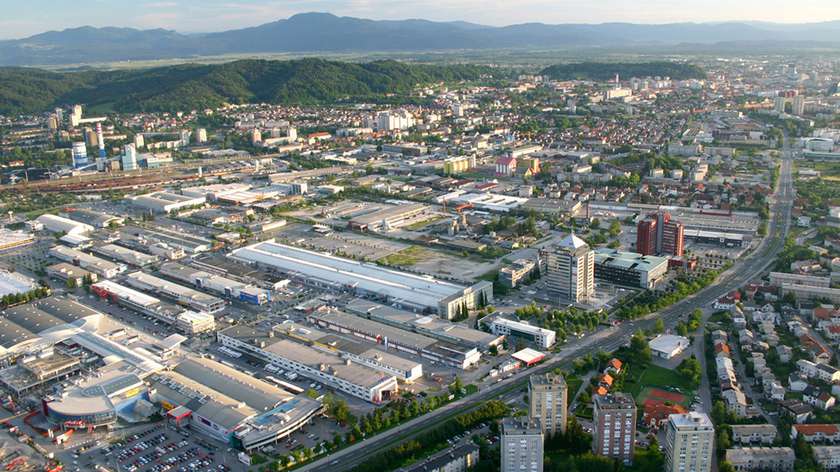
In 1954, a company named Central Warehouses was founded. The company expanded their operations by starting to carry out the warehousing activities also for other Yugoslav companies. By the year 1975, it became the largest goods and transport centre in former Yugoslavia nad one of the largest of it's kind in Europe. 1990 presents a turning point for the company. It rebranded it self as BTC (Entertainment and Shopping Center) with an aim to create the larges shopping area in Slovenia.
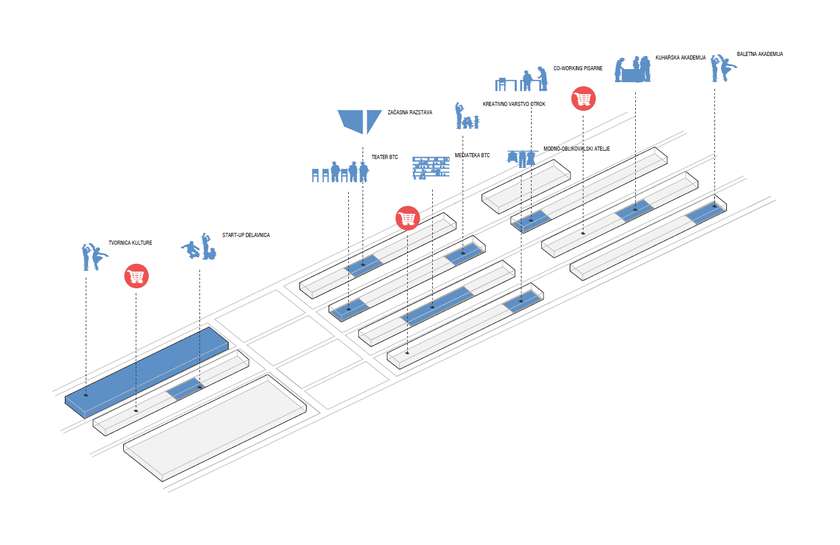
The gaps formed by the failed businesses and shopping areas in a fabric of the old warehouses turned stores, may be filled with a different, creative and also non-profitable contents. In this manner the area will acquire a new audience, one that it desperately needs for a sustainable survival in the future. Such intervention of an unlikely content for a shopping and entertaimnet area will irreversabliy bind the area with Ljubljana's city center, from which it is now so alienated.
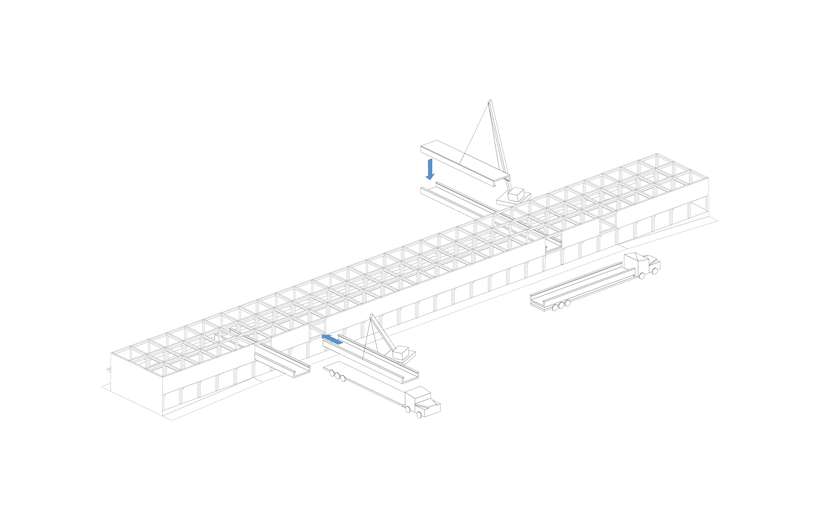
However, in order to secure a successful implementation of new substances, the ideas must be followed by a comprehensive architectural refubrishment. Due to the urban blight that sporadical shops brought to the former uniform look of the warehouses, the area as a whole is in dire need of a wider catalogue of urban and architectural elements, which will be applied in the the renovation of facades, interiors, streets and in cases when connecting warehouses together.
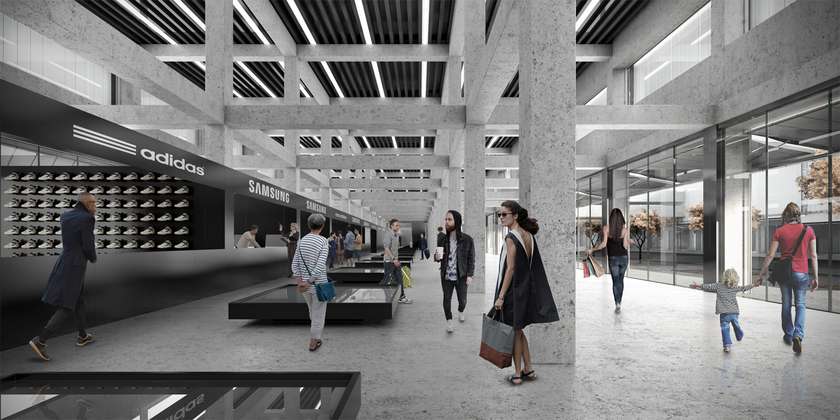
The BTC City area represents an opportunity to transform Ljubljana into a contemporary regional city which will, through a new spatial and program axis, connect the existing city center with new development areas along the Šmartinska road. The regional city will allow a development and placement of new pluralistic city-shaping activities in a much wider area of Ljubljana and will thus form the city’s new cosmopolitan identity.
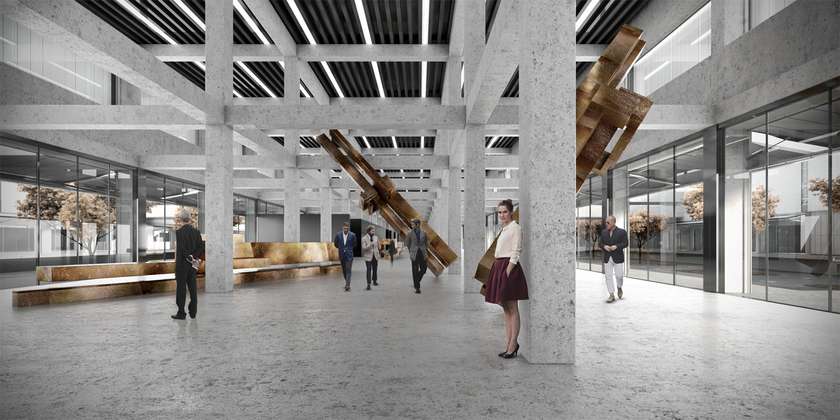
Architectural renovation of the BTC City area includes regulation of the area of the former public warehouses, which are still preserved in their original form and are therefore the holder of historic memory in a space, predominantly permeated with new generic onstruction. The con¬cept design comprises a wider urban regulation, regulation of the ground floor and the street furniture of repair roads, as well as architectural and content redesign of the former public warehouses.